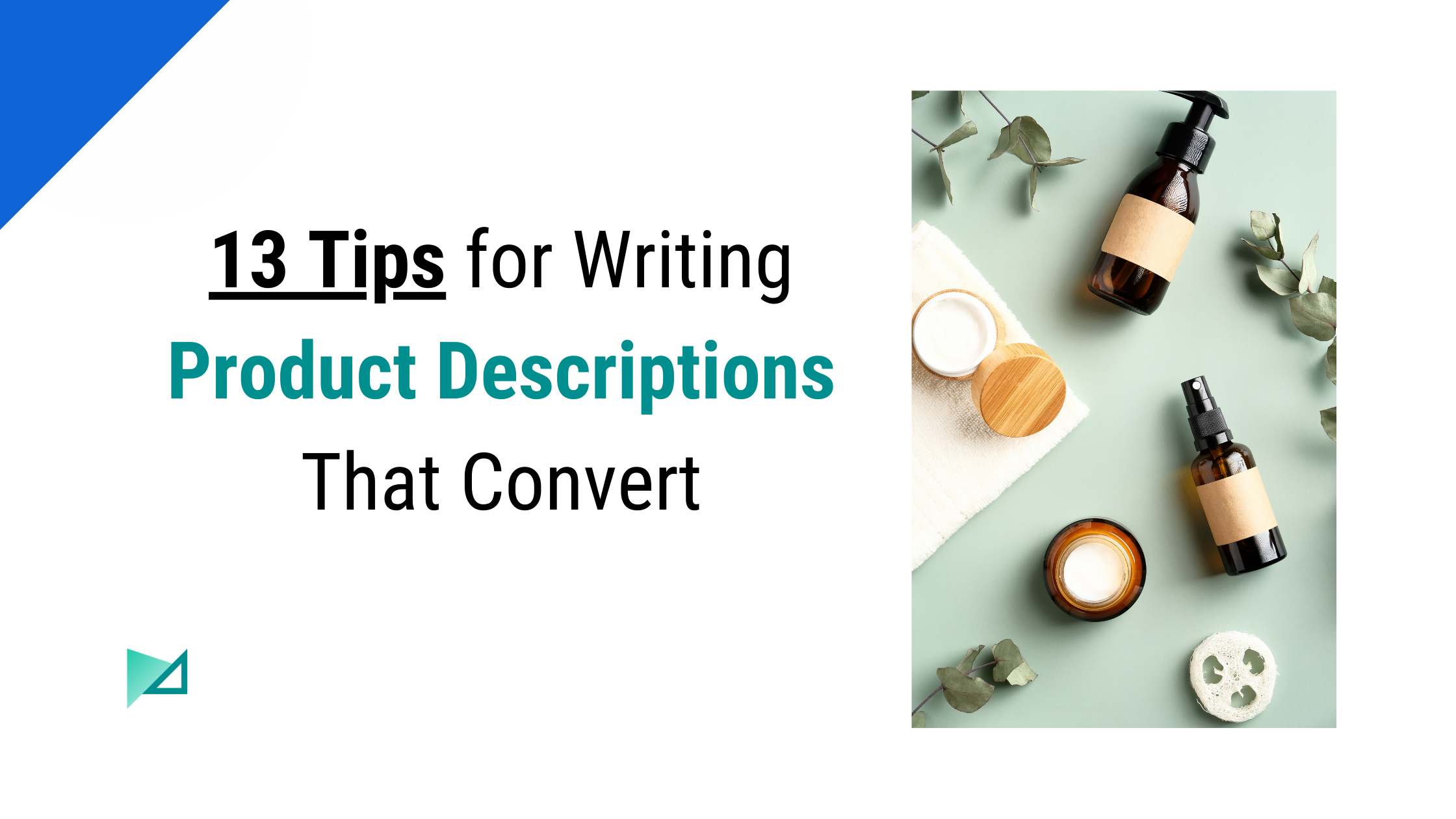Product descriptions do two things on your ecommerce store — they educate site visitors about your product and then persuade them to buy.
Most ecommerce businesses understand the first purpose and create product descriptions accordingly.
However, what’s missed is that extra effort that can help visitors understand the product so well that nothing is left to prevent them from becoming a customer.
In this post, you’ll find tips for researching, preparing, and writing more compelling product descriptions that convert and boost your sales.
Preparing to Write Highly-Converting Product Descriptions
If the ingredients are not ready, the cooking time increases — and it may affect the taste of your food.
Set yourself up for success with these important steps before you try writing your product descriptions.
1. Document Your Ideal Customers
First things first – document your ideal customers.
I’ve noticed that too often, business owners and marketers know who they want to target but only in a sort of tangential way. They haven’t done the work of documenting and really fleshing out that idea for customer.
Documentation helps business owners, consultants, and marketing teams to stay on the same page.
Not sure where to start or what information you need? We use this template on Google Spreadsheets (and you can, too):
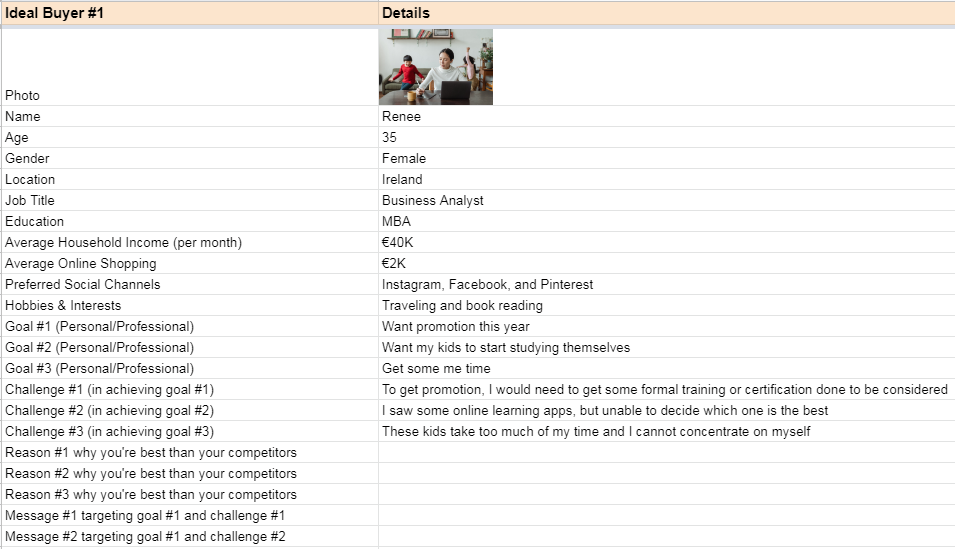
Copy this template, fill it out for your own customers, and share it across your management, marketing, and sales team.
2. List All Product Information
Until and unless you know what you want to tell your customers about your product, it’s difficult to plan the best content.
List everything from the product’s manufacturing date, specifications, and benefits, to “How-tos” as a checklist in Google Spreadsheets.
Just like this:
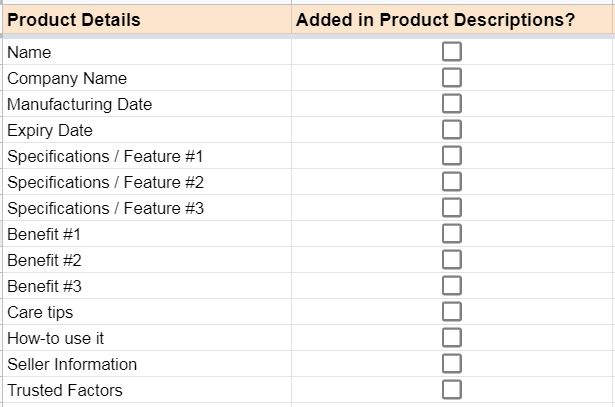
When you start writing product descriptions, you can mark them done as you go. This step ensures that you don’t miss out on any important product information on your site.
Now that you have this important information at hand, it’s time to start writing product descriptions that sell.
How to Write Product Descriptions That Convert
I highly recommend that you do not design the product detail page before you write the product descriptions. You’ll understand why soon.
Here’s where you should start instead.
1. Do a Detailed Competitive Analysis
Doing a competitor analysis doesn’t mean you need to find how they’ve crafted their product descriptions.
Go as a buyer to identify the gaps in educating or persuading the buyer, not as a competitor to copy and implement.
List any errors you find with your “customer hat” on and convert them into a checklist.
You can review it after you’ve written your own and ensure you aren’t making the same errors as your competitors are.
2. Begin by Finding Your Transactional Keywords
With SEO becoming one of the best ecommerce marketing channels to drive traffic and sales, you need to make sure your product descriptions are written with search engines in mind, too.
A lot of marketers make a mistake here by writing the product descriptions first and then optimizing them. But let me tell you, a properly planned and optimized description tends to give results faster.
Try using Semrush for keyword research and the Keyword Insights tool by Snippet Digital to identify the search intent of those keywords. When you know the search intent of the keywords, you can use the right ones for your product description.
For example, for the keyword [waterproof digital camera] you can see in the Keyword Insights tool that seven pages ranking on the SERPs are Product/Category pages.
This tells me that the keyword has transactional intent.
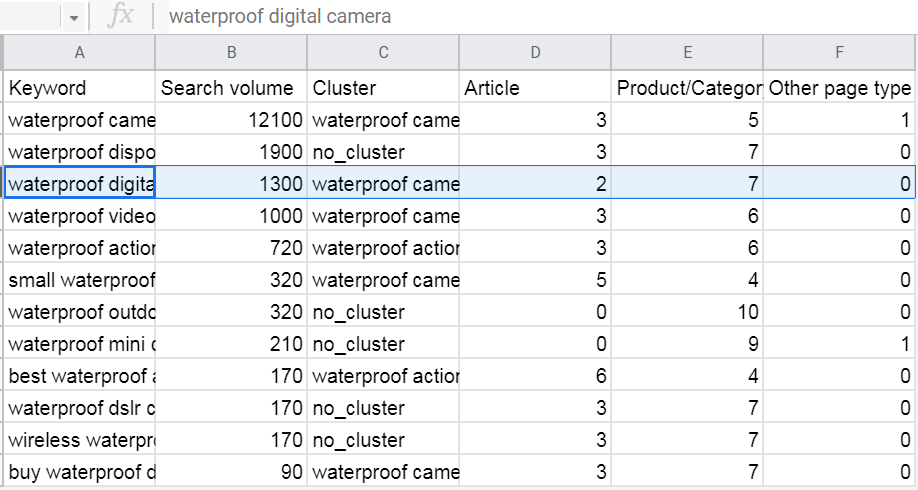
Do this for all your products and make sure to pick up the keywords with only transactional search intent.
3. Craft a Buyer & Keyword-Centric Product Description (Headings + Paragraphs)
With your list of keywords ready, you’re ready to write the title and subtitles of your product description.
For example, the Ustraa brand utilizes the keyword “beard growth oil” which has a keyword volume of 18,100.
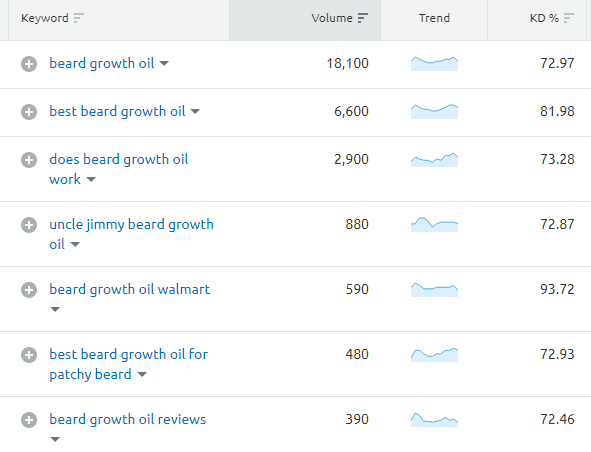
They’ve used this keyword in their title as well as all the subtitles.
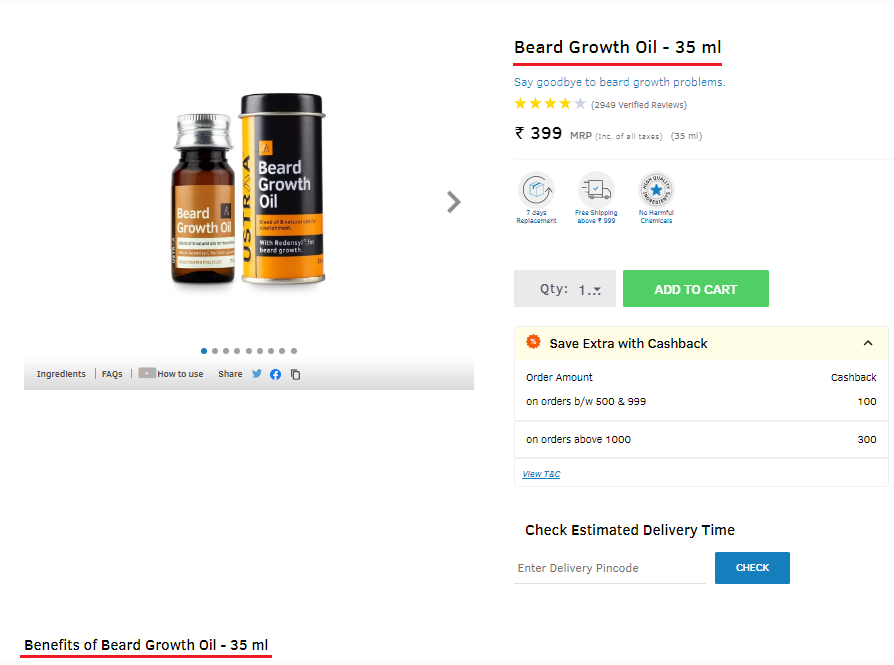
And now look at their results on Google:
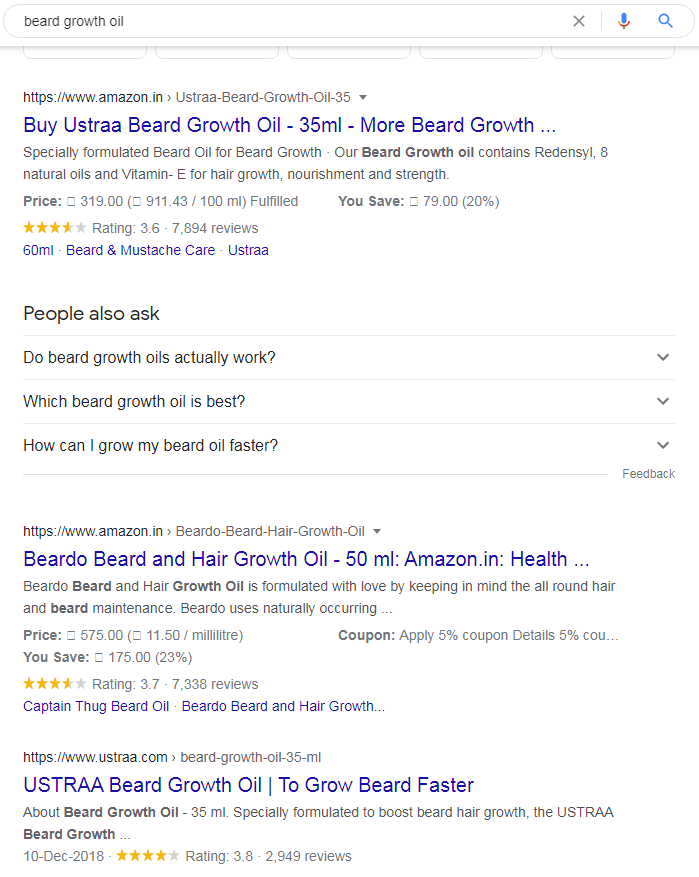
They’re not only ranking on the top with their Amazon listing but even right after Amazon’s two listings, the brand’s product page is ranking immediately.
With your headings written, you can include your transactional keywords in the details about your product, as well as in the product description to make it rank and convert.
4. Benefits vs Features First – Choose Based on Your Products
Customers approach shopping for different products in different ways.
For example, if a customer is buying a mobile phone online, they will first look for phone specifications such as screen size, camera, etc.
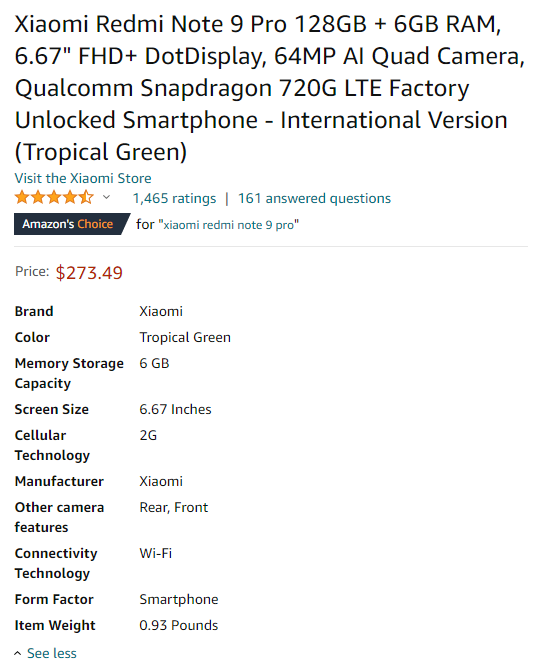
But if a customer is buying a beard growth oil (as in the example above), they may want to learn the benefits of the product first.
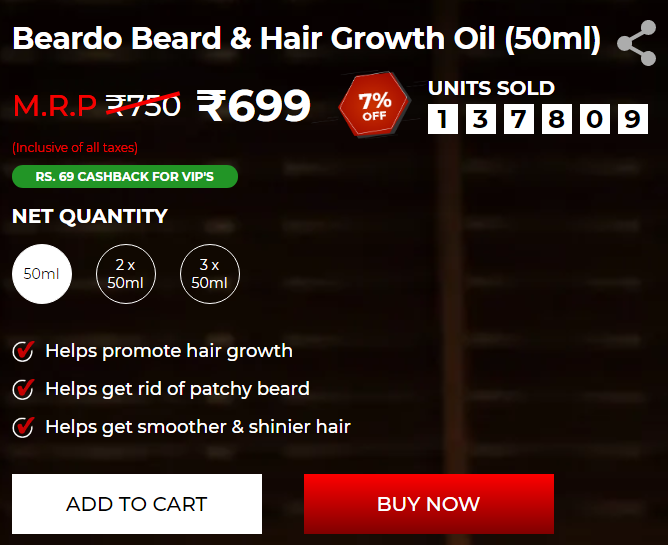
Identify how consumers buy your products online, prioritize, and add the information they need to your product descriptions accordingly to overcome barriers to conversion.
5. Consider the 4Cs of Copywriting While Writing Product Descriptions
The ecommerce business is time-critical, and all business owners want to launch it fast.
But that should not affect the quality of the product descriptions. If it’s not written well, you won’t see the ROI.
It helps to write product descriptions with these 4Cs in mind:
- Clarity: The descriptions should be clear enough to be understood by not just your ideal customers but their influencers, as well.
- Concise: Use fewer words to describe your products effectively (get creative here).
- Compelling: Address consumer needs, expectations, challenges, and demands. Help them feel as if the product is made just for them.
- Credible: Ensure that the information you are sharing is accurate and avoid hyperbole.
StoreApps nails it when it comes to writing clear, concise, compelling, and credible product descriptions.
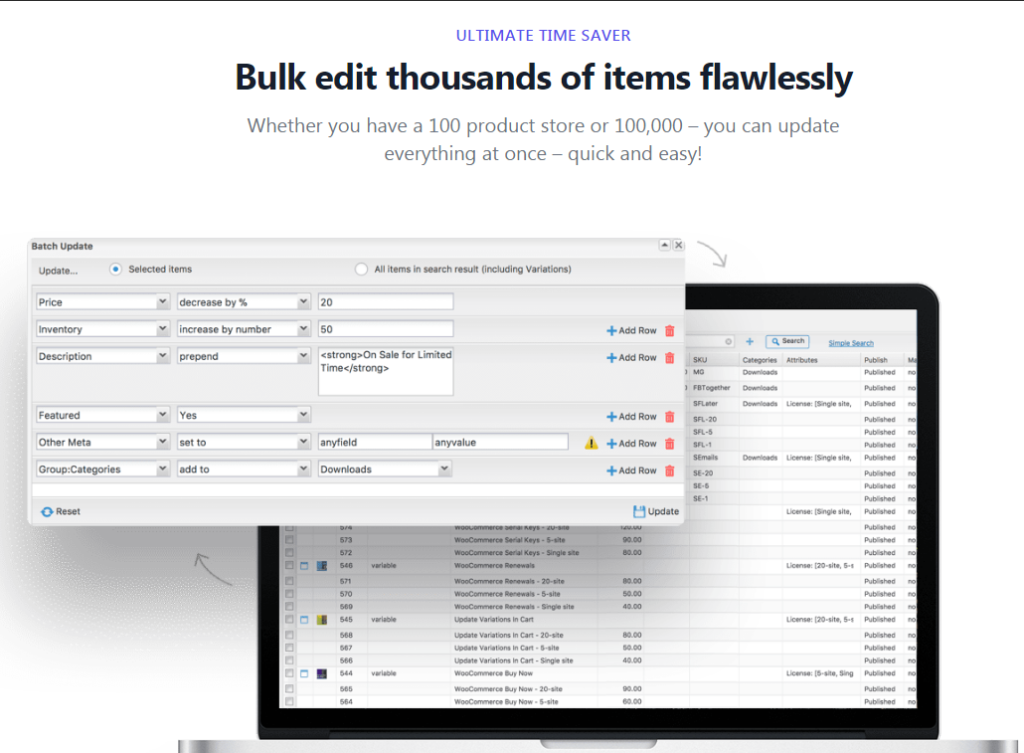
6. Add Creative Taglines Wherever Possible
Writing creative taglines in your product descriptions is not for mass marketplaces where you can only afford to focus on writing keyword-centric content.
Premium/luxury brands or niche brands have a different set of buyers which they may target only through social platforms or emails. This is where creativity matters more than keywords.
Here is an example from March Tee that describes products creatively.
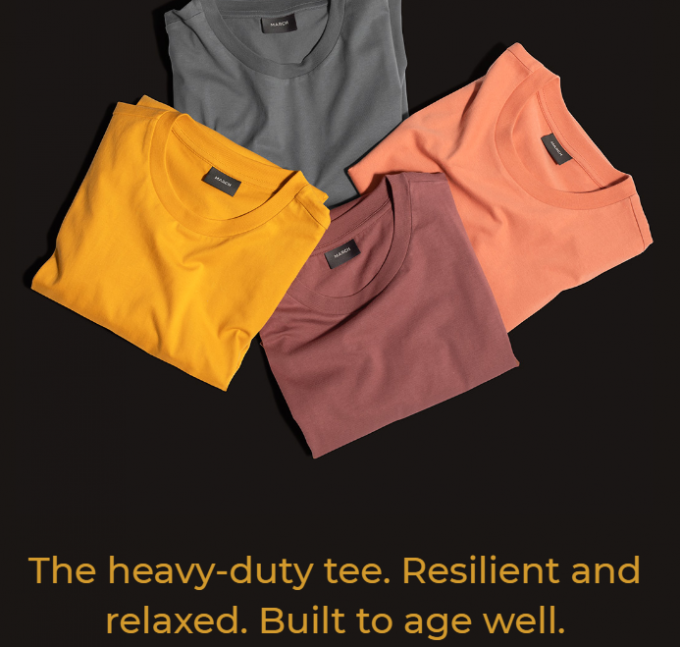
7. Add a “How-to” Section to Your Product Description
If you think your product doesn’t require this section, think again. Can you explain anything from the below for your product?
- How to use/apply it.
- How to keep it clean.
- How to start/stop it.
- How to make it.
- How to wash it.
- How to install it.
Then you must add it to your product description. The purpose is to help the visitors get extra details right there on the page, without needing them to go somewhere else.
Here is an example of a product description by Cult Beauty with a how-to section.
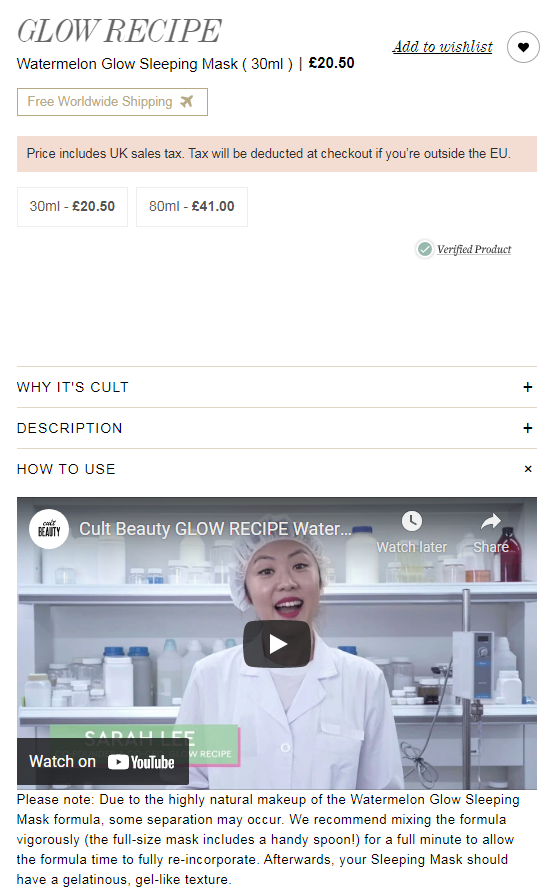
You’re saving consumers time by adding a how-to section within the product description, both speeding up the conversion process and reducing the risk they’ll wander off to find information and never come back.
8. Add Your Brand Story With a Shorter Background
Adding brand stories in your product description is recommended for both vendors selling on marketplaces and their own online stores.
People buying from their favorite brands or retailers already trust them, and that’s the reason they’re loyal to those brands.
But for niche businesses and startups, marketplaces can help build that early visibility and traction.
To stand out in marketplaces, help customers understand who you are and why they should do business with you. Add your brand story with a little history of your company and products to your product description. As my colleague, ecommerce business consultant Vatsal Shah, rightly says:
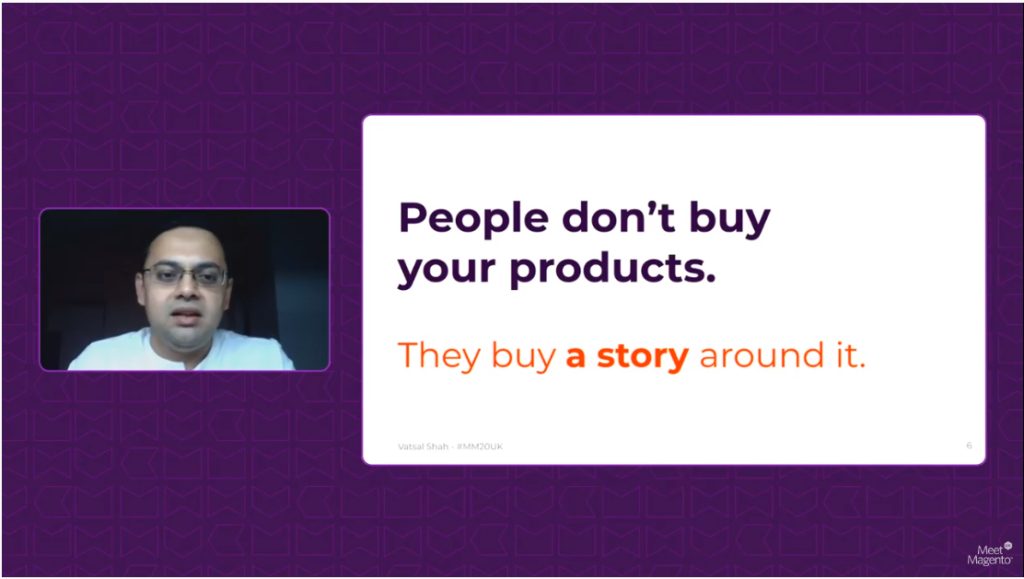
Here is an example of a niche brand, Kleen O Wipe, sharing its brand story on a marketplace product description:
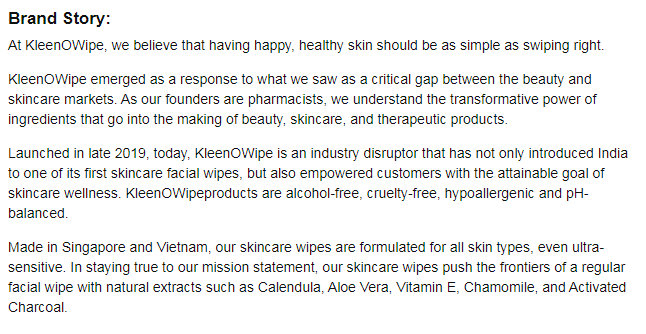
Your brand story enables buyers to connect emotionally with your brand.
9. Use Social Proof to Build Trust and Invoke Sales
When it comes to increasing conversion rate optimization, social proof is key.
And here, we’re talking about writing product descriptions that convert, so adding social proof becomes a must. This could include:
- Product reviews on your site, Google, or marketplaces.
- Shout-outs on social media.
- Video reviews on YouTube or social media.
When adding such social proof, you’re providing genuine reviews on how people perceive your products. That psychologically impacts visitors in the very moment they’re looking to make a buying decision.
TripAdvisor allocates a place for social proof in their product detail pages:

10. Add a FAQ Section to Persuade Buyers
Marketplaces never miss on adding FAQs as they have multiple vendors and if a customer has questions, only vendors can answer them.
But FAQs are ignored by many other online merchants or retailers, as they feel they have their email address or customer support system to answer the queries.
You need to understand this from a customer’s point of view. It’s a long process to email you and get answers.
If the common questions and answers are available on the site, you can boost the time to convert and save some time for your support team.
Identify the questions a customer may have about your product, write answers, and prioritize the product FAQs in the below format.
- Features/specifications.
- Benefits.
- Usage.
- Care.
- Shipping/delivery/return/exchange.
Here is an example of the product descriptions covering FAQs by an eyewear brand, Lenskart.
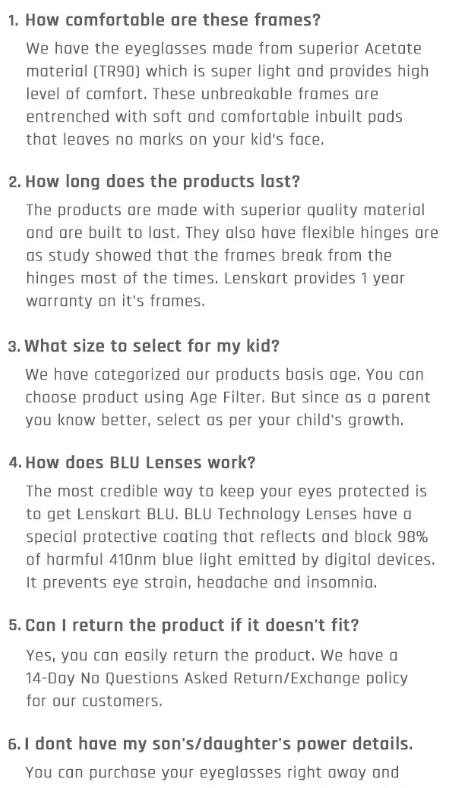
11. Finish with All of the Basic Yet Pending Information
You’ve covered almost all the important product information by now that can help in boosting your conversions.
Now, go back to the checklists you had created with all of your product information and competitor analysis.
Maybe you have an opportunity to add information about packaging, vendor, shipping & fulfillment, delivery partners, return/exchange, warranty, guarantee, assembling services, virtual or at-home try, wash cars, or other considerations.
Get creative in how you call out these key points.
For example, an online jewelry brand, Caratlane, showcases the following information in a fancy design,

And, they’ve simply added other information,
12. Use Bullet Points for Easy and Quick Reads
You’re writing product descriptions for humans. They’re going to look at your products, read the information, and decide whether to buy it or not.
Features and benefits are the highlights of your product, and hence should be featured in bullet points. This lets consumers scan through the benefits and features faster, and conversions can happen quicker.
Like I said before, time-to-convert matters the most because distractions can happen anytime, and you cannot afford that.
A product description in bullet points by B.fresh is a very good example.
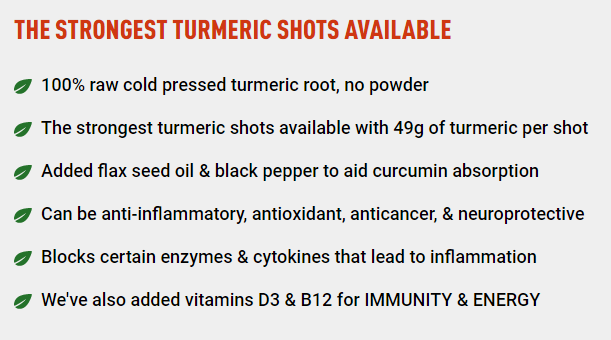
13. Use a Mix of Text and Graphics (Turn the Necessary Text Into Graphics)
It’s time to talk about the product description that you’ve written and its design.
Try to figure out how you want to present your product description, whether as text or graphics. Usually, I don’t recommend graphics alone as you’ll miss out on chances to rank in search.
An Australian shoe brand, Rivers, has its all-text product description to compete on search engines and drive conversions.
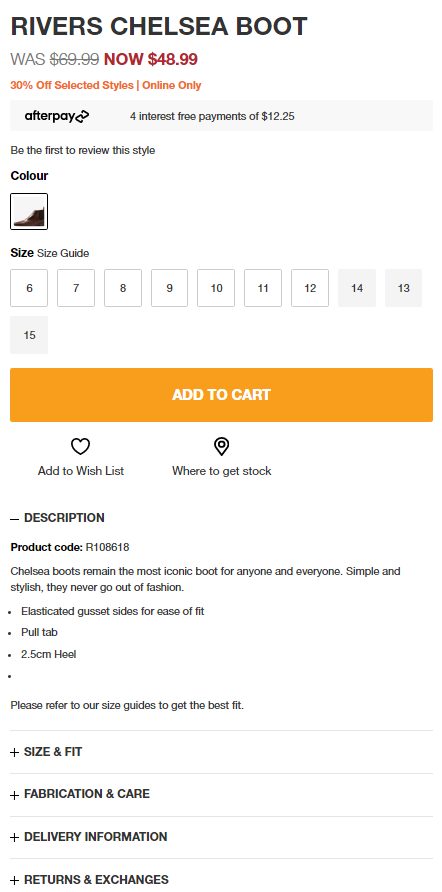
But brands looking for creativity over keywords or those that enjoy popularity and name recognition might choose graphics over text or a mix of both.
Nykaa is a popular online beauty marketplace. They use a blend of graphics (more) and text (less) to showcase their product information.
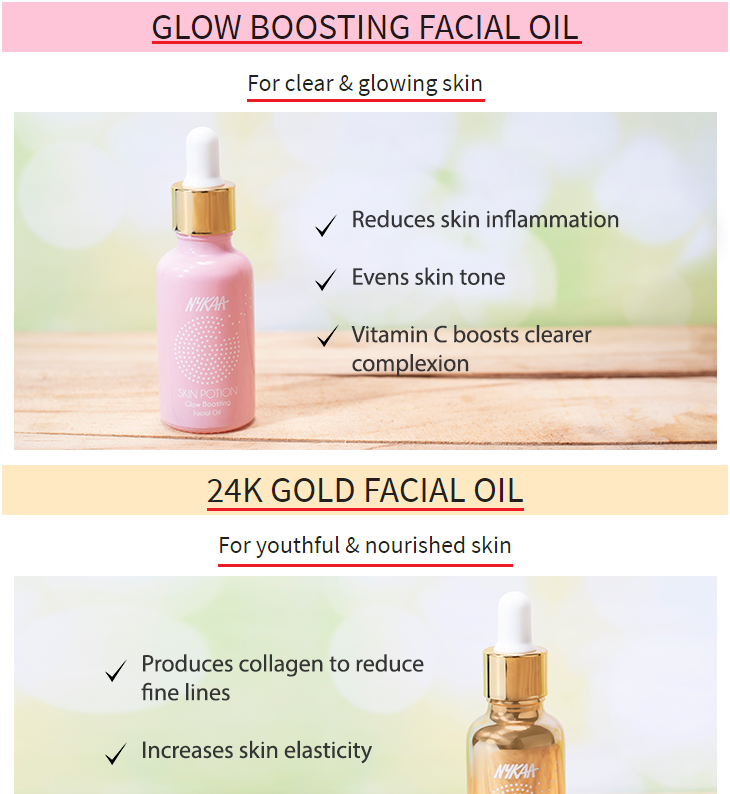
The red underline represents the text, and the rest are graphics.
Product Descriptions Have the Power to Boost Conversions and Maximize ROI — Make the Most of It
When buyers’ expectations are fulfilled, they’re more likely to buy your product. Keep this in mind at every turn as you use the process above to write more compelling, better converting product descriptions.
Plan, write and design your product description for your ideal customers. If possible, outsource your product description writing to eCommerce content writing agency that knows what it takes to help you
Then optimize them for search and nothing can stop you from attracting, persuading, and turning more visitors into your customers.

